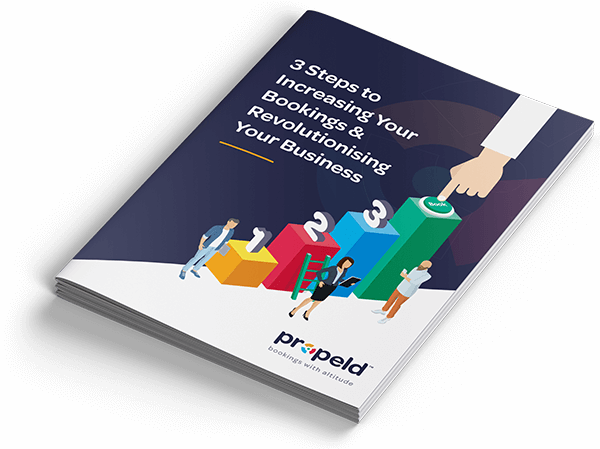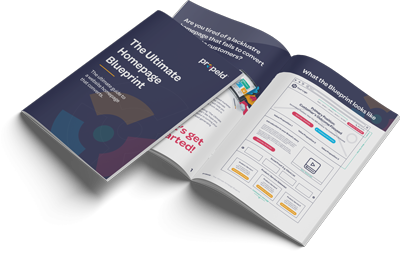5 seconds isn’t a lot of time – who remembers that old myth that food won’t get germs on it if it only touches the ground for 5 seconds? Like time itself gave the food some kind of magical barrier from germs!
Well, unlike the 5-second food rule, the 5 second rule for websites isn’t a myth. It’s all the time you have to grab your visitor’s attention.
Yep, that’s right, research shows that users form an opinion about your brand within the first 3-5 seconds of visiting your site. With that first impression, they will decide whether they’ll stay and continue on their buying journey or leave and explore other options.
At a time when every second counts, your website must quickly convey the essential information a customer is looking for. This is where many businesses make the most rudimentary of mistakes. They forget to be clear and concise, bamboozling the visitor with witty prose and fluffy statements. Or worse, they say nothing at all, hoping that their beautiful images will fill the gaps of what they have left unsaid.
To make those precious seconds count, your site needs to communicate clearly:
- what you offer,
- how it can help the intended user, and
- what you expect them to do next.
3 Questions Your Website Must Answer
In this article, I’ll frame these as three questions visitors subliminally ask themselves when visiting your website for the first time.
1. How Can They Help Me?
Visitors arrive at your site with a problem or need. The first thing they want to know is if you can help them. The best way to do this is to let them know how they’ll feel or what they’ll get out of working or buying from you.
Show them what life could be like.
It’s crucial when answering this particular question that you come at it from a customer-centric point of view. The statement you build here shouldn’t include “we” or “I” statements.
It’s not about you or the brand at this stage, it’s all about the customer.
Answering this question effectively requires emotionally connecting with your visitor. If you can do it effectively, you are well on your way to enticing visitors to take the next step or at least keep exploring.
Here are some examples of how to address this question:
- Live an active lifestyle without pain – physiopod.co
- Never be left in the dark – ledlightco.com.au
- Embark on an Epicurean Adventure at the Meeting Point of Lava & Ocean – basaltwines.com.au
2. What Do They Offer?
Once visitors understand you can help them, they want to know how. Explain in simple terms how you will solve their problems.
This isn’t about listing all your products or services in detail but providing a clear, succinct positioning statement. Here is where you can use those ‘we’ and ‘i’ statements.
Focus on the benefits and outcomes, not just the features.
Here are some examples of how to address this question:
- Combining award-winning wines, exquisite food, and breathtaking views, Terindah Estate is the Bellarine’s premier boutique venue – Terindahestate.com.au
- Where Your Stay Is An Experience In Itself – Big4apollobay.com.au
- Let our professional team take the stress out of moving day – Justmoved.com.au
3. How Do I Take the Next Step?
Visitors should never be left wondering what the next step is.
If you’re making it too hard to buy then the liklihood is that visitors will leave your site without performing the desired action. Remember this “a confused mind, never buys”.
Whether signing up for a newsletter, making a purchase, or contacting you for more information, make the call to action (CTA) prominent and straightforward.
Read this article for more information on calling your customer to action.
What’s at stake if you don’t address the 5 Second Rule for Websites
Failing to answer these questions will lead to confusion and frustration, causing visitors to exit and look elsewhere.
Don’t make your customer think; clarity is key.
Use simple language and easy-to-understand copy to ensure they don’t have to work harder than they should to understand your brand.
Suggestions to Enhance Clarity
Use Concise Headlines: Grab attention with short, impactful headers that clearly communicate your message.
Avoid Jargon: Keep language straightforward and accessible. Avoid industry-specific terms that might confuse visitors.
Prominent Call to Action: Ensure your CTA is easy to find and understand. Use actionable language that tells visitors exactly what to do next.
Test Regularly: Use real user feedback to refine and improve clarity. Regular testing can help you identify and fix any issues causing confusion.
Take Action
Take a look at your website: Can you answer these questions within 5 seconds of landing on the site? If not, it might be time to make some changes. Remember, clarity is crucial to keeping visitors engaged and guiding them towards conversion.
Need some help clarifying your message? Feel free to book a free 30-minute discovery call.

